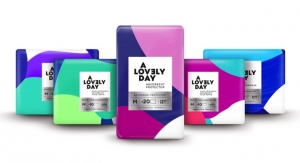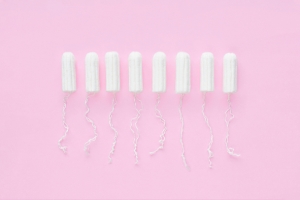Suominen Corp.08.16.16
Thanks to global advancements in healthcare and standards of living, people are living longer than ever before. In 2015, there were 599 million people over 65 years globally and it is expected that in 2020, the number of senior people will be 712 million. And who knows where the growth stops.
The aging of the population itself creates new needs but what is revolutionary is the fact that senior people are ever more active. This increases the demand for products that might not be considered everyday goods today. Absorbent incontinence products, such as panty liners, disposable underwear and adult diapers, are good examples of products like that. Their growing popularity will, in the course of time, shift the balance in the hygiene market from diapers and feminine hygiene products towards incontinence products.
Men and Women of All Ages Suffer from Incontinence.
But what is incontinence? It refers to both urinary incontinence and bowel incontinence and can be further divided into several subtypes: Urge, stress, overflow and functional incontinence, all of which have different causes. Men and women of all ages, from children to seniors, suffer from incontinence and as the awareness of this discomfort is increasing, using incontinence products is becoming more and more socially acceptable.
Incontinence products are by no means common consumer products yet, which is quite evident when you compare them to, for example, baby diapers or sanitary napkins. This is the case even in North America and Europe, where the market penetration of incontinence products is still quite low.
Adult Diapers? Well, Not Exactly

Lynda A. Kelly, senior vice president, Care business area at Suominen, showcasing modern
pull-up pants and a conventional adult diaper.
When one hears the word ‘incontinence product’, the first thought may be conventional, bulky adult diaper – like one of those we are used to see babies wearing, just bigger. In reality, modern incontinence products are far more advanced than that: They are ultra-thin, super absorbent and very discreet, unnoticeable from outside. And as the market drivers are strong, the hygiene product industry is constantly innovating to make these products even more outstanding, or actually quite the opposite.
The incontinence products can be divided into two categories: Products for light incontinence and products for moderate to heavy incontinence. In products for light incontinence, protective pads and panty liners are the most popular products. Incontinence pads, also known as bladder pads, differ from those used for menstrual protection. Where they look similar and both are lightweight, incontinence pads are designed to hold more fluid, to keep skin dry and capture odors.
The most rapidly growing category in products for moderate to heavy incontinence is protective underwear, pull-up pants, which feel like regular underwear and are discreet but also serve the purpose of keeping the wearer dry. This kind of disposable underwear should be, by definition, cloth-like, soft and comfortable. Breathability, too, is one of the most important features since these products are meant to enable normal, active and care-free living. As these products are becoming more common, the manufacturers need to differentiate from the competition with their products. In this game, manufacturers who combine all the features mentioned above to unique designs and exclusive materials are the most probable winners.
An advanced spunlace nonwoven made specifically for the purpose not only performs but also enhances wearer comfort.
Products in both of these categories consist of multiple layers of different materials, for instance, films, pulp and of course nonwovens, which are used for various purposes in incontinence products. Nonwovens used in stretch parts must combine traditionally incompatible features, such as strength, stretchability, softness and light weight. Suominen’s award-winning FIBRELLA Lite nonwoven, one of the lightest spunlace nonwovens available in the market today, is a perfect example of a state-of-the-art which meets all those requirements.
Another part where nonwovens are needed is the ‘acquisition and distribution layer’ (ADL) which Suominen’s FIBRELLA® Move represents. Its purpose is to acquire the fluid, transfer it into the absorbent core and prevent it from flowing back onto skin. An advanced spunlace nonwoven made specifically for this purpose not only performs the task quickly but also enhances wearer comfort. If you are interested in more in-depth information on end user needs, hygiene product markets and nonwovens for hygiene products, please don’t hesitate to contact Suominen experts.
The aging of the population itself creates new needs but what is revolutionary is the fact that senior people are ever more active. This increases the demand for products that might not be considered everyday goods today. Absorbent incontinence products, such as panty liners, disposable underwear and adult diapers, are good examples of products like that. Their growing popularity will, in the course of time, shift the balance in the hygiene market from diapers and feminine hygiene products towards incontinence products.
Men and Women of All Ages Suffer from Incontinence.
But what is incontinence? It refers to both urinary incontinence and bowel incontinence and can be further divided into several subtypes: Urge, stress, overflow and functional incontinence, all of which have different causes. Men and women of all ages, from children to seniors, suffer from incontinence and as the awareness of this discomfort is increasing, using incontinence products is becoming more and more socially acceptable.
Incontinence products are by no means common consumer products yet, which is quite evident when you compare them to, for example, baby diapers or sanitary napkins. This is the case even in North America and Europe, where the market penetration of incontinence products is still quite low.
Adult Diapers? Well, Not Exactly

Lynda A. Kelly, senior vice president, Care business area at Suominen, showcasing modern
pull-up pants and a conventional adult diaper.
The incontinence products can be divided into two categories: Products for light incontinence and products for moderate to heavy incontinence. In products for light incontinence, protective pads and panty liners are the most popular products. Incontinence pads, also known as bladder pads, differ from those used for menstrual protection. Where they look similar and both are lightweight, incontinence pads are designed to hold more fluid, to keep skin dry and capture odors.
The most rapidly growing category in products for moderate to heavy incontinence is protective underwear, pull-up pants, which feel like regular underwear and are discreet but also serve the purpose of keeping the wearer dry. This kind of disposable underwear should be, by definition, cloth-like, soft and comfortable. Breathability, too, is one of the most important features since these products are meant to enable normal, active and care-free living. As these products are becoming more common, the manufacturers need to differentiate from the competition with their products. In this game, manufacturers who combine all the features mentioned above to unique designs and exclusive materials are the most probable winners.
An advanced spunlace nonwoven made specifically for the purpose not only performs but also enhances wearer comfort.
Products in both of these categories consist of multiple layers of different materials, for instance, films, pulp and of course nonwovens, which are used for various purposes in incontinence products. Nonwovens used in stretch parts must combine traditionally incompatible features, such as strength, stretchability, softness and light weight. Suominen’s award-winning FIBRELLA Lite nonwoven, one of the lightest spunlace nonwovens available in the market today, is a perfect example of a state-of-the-art which meets all those requirements.
Another part where nonwovens are needed is the ‘acquisition and distribution layer’ (ADL) which Suominen’s FIBRELLA® Move represents. Its purpose is to acquire the fluid, transfer it into the absorbent core and prevent it from flowing back onto skin. An advanced spunlace nonwoven made specifically for this purpose not only performs the task quickly but also enhances wearer comfort. If you are interested in more in-depth information on end user needs, hygiene product markets and nonwovens for hygiene products, please don’t hesitate to contact Suominen experts.


















